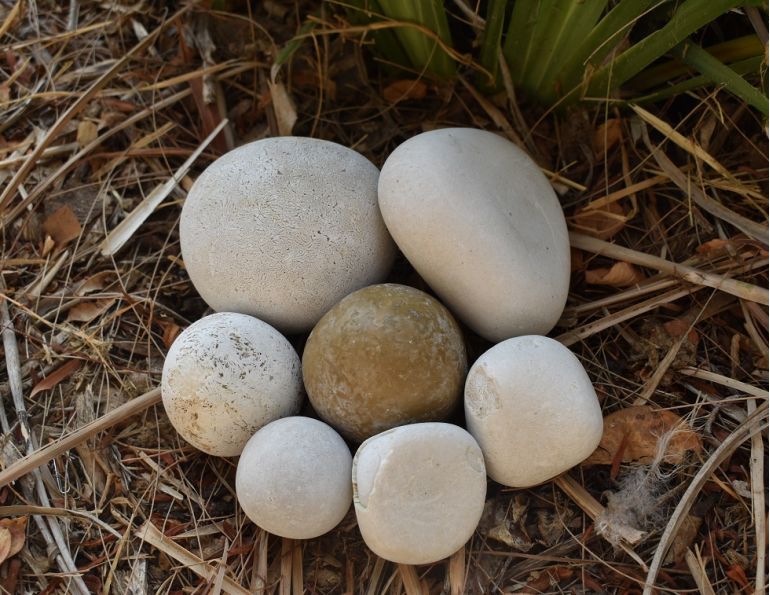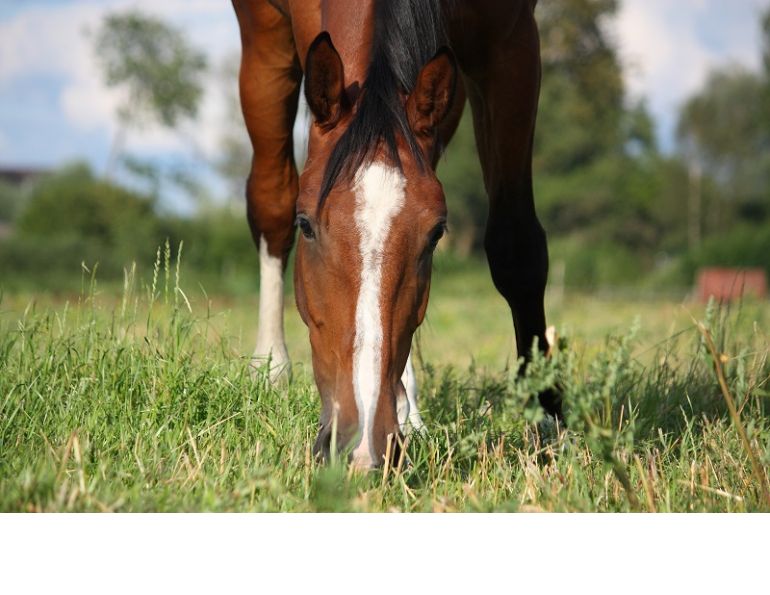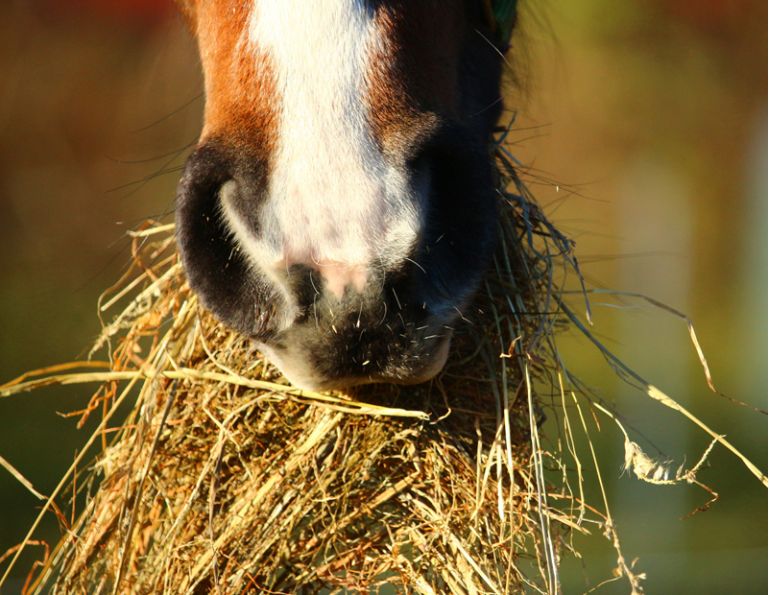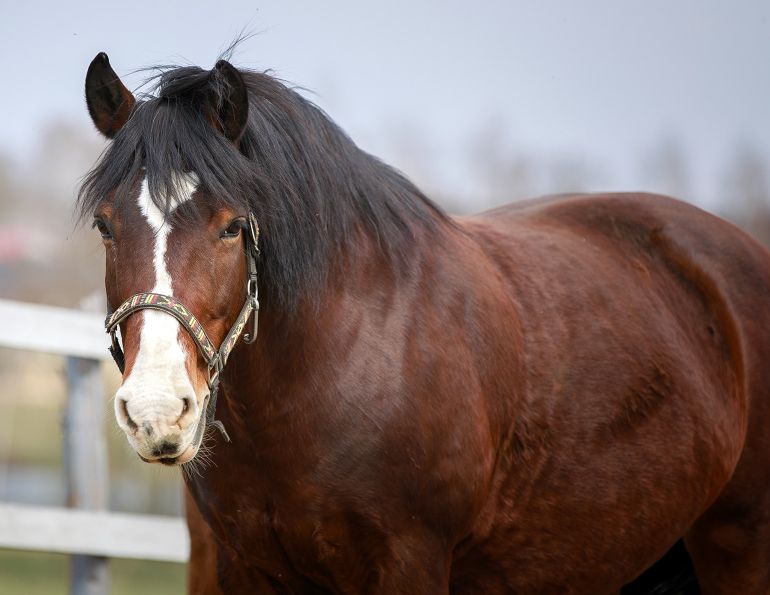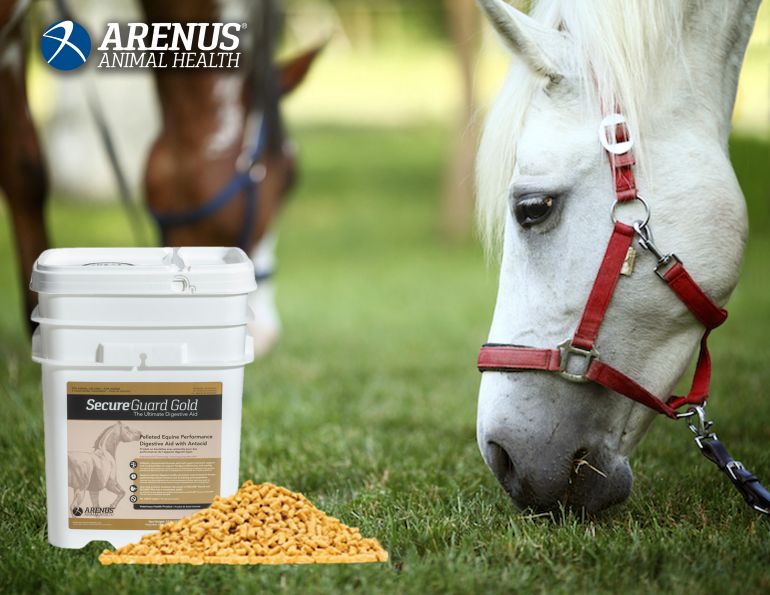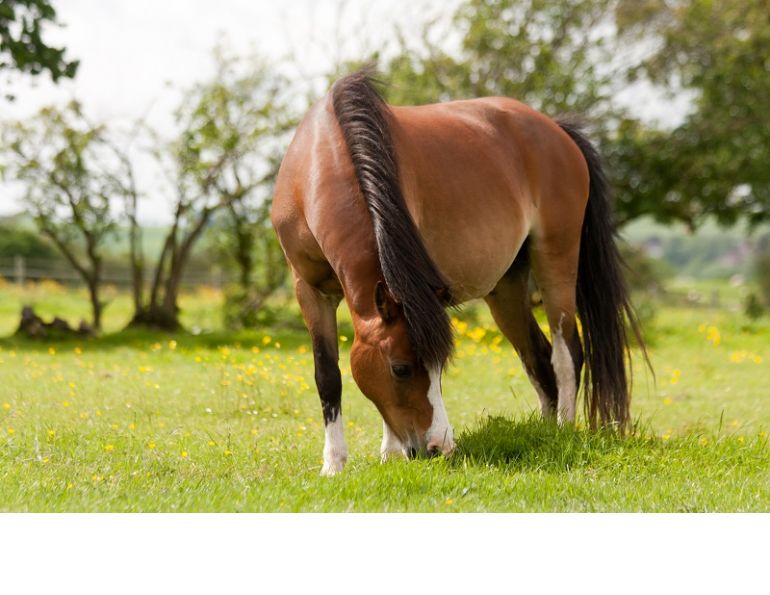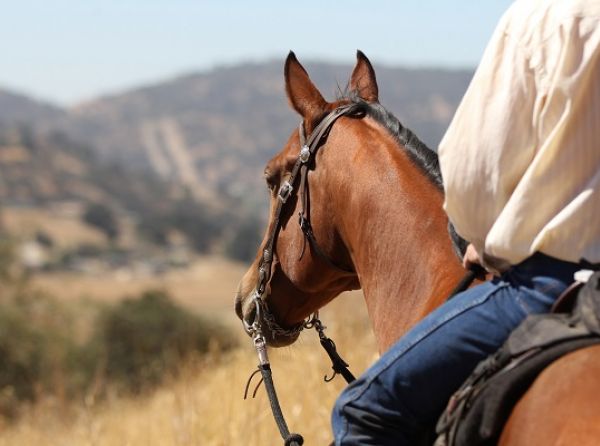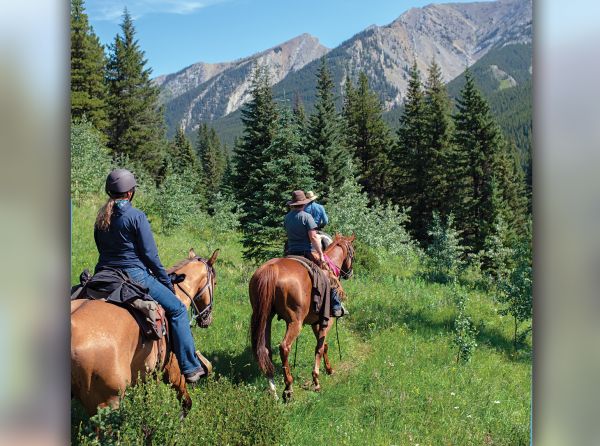How to assess your horse’s condition and body weight without a scale
By Shelagh Niblock, PAS
If you have ever evaluated your horse’s ration or tried to calculate an appropriate dose of dewormer for a growing horse, you will know that accurate estimation of your horse’s body weight is important for meaningful results. While we all know that a mechanical or digital scale is probably the best way to evaluate the weight of your horse, not many of us have convenient access to one. Horse owners do have access to other tools for estimating the body weight of their horses. Weight tapes, for example, are inexpensive and readily obtainable at most feed stores. A soft cloth tape measure used for sewing is also easy to source and not expensive. The use of a tape measure can give you the information you need to utilize any one of several formulas available to calculate a horse’s body weight using body measurements.
Body Condition Scoring – Henneke Scale
When determining the body weight of your horse for ration balancing purposes, it’s important to know the difference between the horse’s current body weight and his preferred body weight. Often the reason we embark upon a ration balancing exercise for our horses is because they are carrying more condition than is healthy. The goal of the ration evaluation may be to limit their intake in order to get their body weight to a place where they are healthier and can do their jobs better and be at a lower risk of metabolic diseases. In order to make an objective assessment of whether your horse is carrying excessive condition, it is useful to evaluate their body condition using the Henneke Scale.
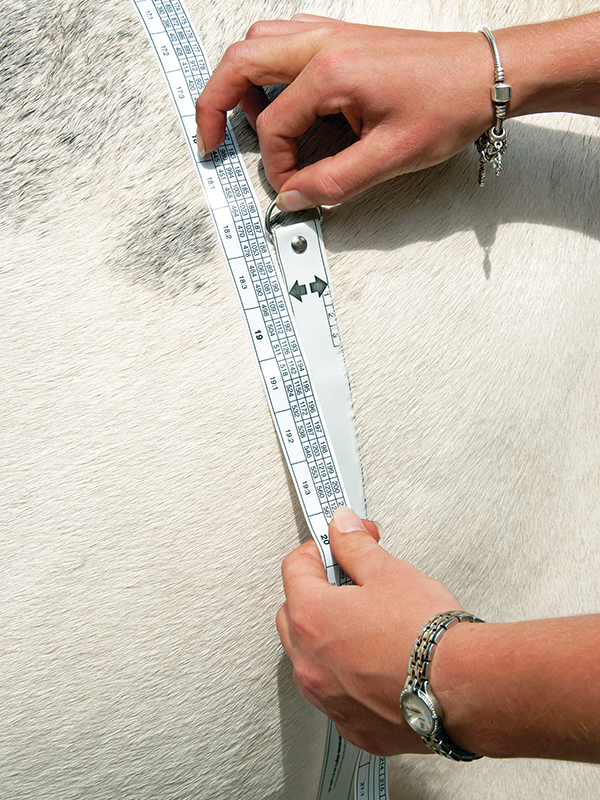
Estimate the weight of your horse using a weight tape by taking a measurement of the heart girth from about two inches behind the elbow, over the highest point of the withers, and hold it snugly straight up and down. Photo: Shutterstock/Chelle129
The Henneke Scale is an equine body condition scoring system developed in the early 1980s at Texas A&M University in the US. It utilizes a numerical scale of 1 to 9 (with 1 being emaciated and 9 being obese) to evaluate body fat both visually and by palpation on six sites on the animal’s body. The Henneke Scale has become standardized for use throughout the world, including in legal cases involving starving horses. A body condition score in the range of 4.5 to 6.5 is considered to be healthy for most horses.
Related: Feeding to the Horse's Body Condition
Body condition scoring your horse provides you with an estimation of trends in his body condition and fitness. This can be helpful in establishing an ongoing management program for your horse’s ration and fitness, however, but evaluating your horse with the Henneke scale can be very subjective. When you first start to use this management tool, it may be helpful for you to enlist the help of your veterinarian or an equine nutritionist to give you a second opinion. We all have a perception of “the ideal body weight” though, so don’t be concerned if your evaluation of the horse is a little different than an evaluation done by someone else, especially if the horse is in those mid-range condition scores.
Pictures Help
An evaluation of your horse using the Henneke scale can be backed up with timely photos. Try to get into the habit of assessing the body condition of your horse on a regular basis, and take pictures each time. A record of body condition scores and photos can provide invaluable information for you to evaluate if your ration plan is actually working for your horse.
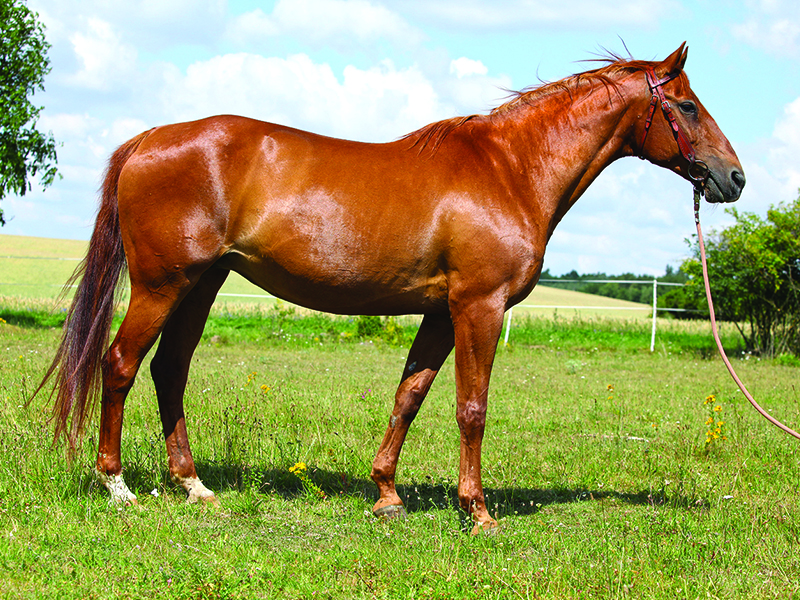
Assess your horse’s body condition on a regular basis and take photos to allow you to observe changes over time. Photo: Canstock/Zuzule
Related: How to Feed and Care For the Senior Horse
Assessing the Weight of Your Horse
Once you have evaluated the body condition score of your horse, you can calculate his weight. If you don’t have access to a scale, then you will need to choose either a weight tape or a formula to calculate his weight. The tool you choose to achieve this should be determined by the kind of horse you have.

Photo: iStock/GlobalP
Using a Weight Tape
Assessing your horse’s weight with a weight tape is easy and reasonably accurate if your horse is a light build breed whose body weight is normally in the 1000 lb (450 kg) range. Weight tapes work best if the horse is not obese, thin, or a smaller breed with a draft-like build, such as a Fjord or Haflinger. Weight tapes are designed so that each increment on the tape represents a calculated amount of body weight in pounds or kilograms.
Estimating the weight of your horse with a weight tape involves getting a “heart girth” measurement. This means you are measuring through the area about two inches behind the elbow, up over the withers at approximately the highest part, or slightly behind depending on the conformation of the horse. Pull the tape around the girth of your horse and hold it snugly but without pulling it tight, trying to ensure it is relatively straight up and down. The number noted on the tape at the gradation where the end of the tape rests is the approximate weight of your horse.
Can I Use a Weight Tape on a Foal?
Weight tapes are not accurate when weighing foals, weanlings, or miniature horses. They are also not useful for estimating the weight of draft horses as typically they won’t go all the way around the heart girth of the horse to be measured. For draft horses, some larger warmblood horses, foals, weanlings, and any horse with atypical conformation, such as a very cresty neck or very large bones, the best way to assess body weight is to use a weight evaluation formula.
Using Weight Tapes for Establishing Trends in Any Size or Breed of Horse
Weight tapes can be a helpful management tool for establishing trends in situations such as refeeding a starving horse or assessing growth rates on weanlings, even though they can’t provide an accurate weight. Even an inaccurate weight measurement, done regularly, will allow you to determine trends in your horse’s weight gain and/or loss patterns, and the trend will help you determine the success of your ration plan.
Weight Assessment Using a Formula
Other than using a proper scale, the most accurate way to assess a horse’s weight, especially for large breeds, foals, and weanlings, is to use a weight calculation formula. The first thing you must do to calculate the weight of your horse using a formula is to use a soft cloth tape measure, ideally at least 120 inches in length. These are readily available at any fabric or sewing notions store. The measurements you want to take include a heart girth measurement, as noted earlier in this article, as well as a body length measurement, measured from the point of the shoulder (humerus) to the point of the rump (ischium). That means your tape measure will be slightly angled upwards toward the hind end of your horse.
As some horses are not particularly fond of standing still while you are measuring and recording your measurements, it is useful to have another person help you complete this. Make sure you let your horse see the tape measure before you start maneuvering it around him as you get your measurements. Measurements can be taken in either inches or centimetres, as there are formulas available for both, but make sure you choose the correct formula for your measurements.
Related: The Not-So-Fab Four: Diseases Resulting in Hind Limb Gait Deficits
Choosing a Weight Calculation Formula
A quick Google search will show you that there are many weight calculation formulas available, and some sites even have an interactive page that will do the calculations for you if you plug in the numbers.
The most commonly used formulas are:
Weight of horse (lb) = heart girth2 (inches) x body length (inches) divided by 330
Weight of horse (kg) = girth2 (cm) x body length (cm) divided by 11,880
Formula for Young Horses and Foals
These formulas provide a reasonably accurate weight about 95 percent of the time for horses over one year of age. However, they are not as accurate for foals, weanlings, or pregnant mares. Some literature suggests that the formula in imperial units (pounds and inches) can be used for foals and weanlings by changing the denominator. Thus, the weight of a foal up to weanling age would be calculated by using the same measurements as those required for a horse, but instead of dividing by 330, you would divide by 280. For weanlings aged from 6 to 12 months, you would divide by 301.
All this sounds great, but if you have ever attempted to get a heart girth measurement on a foal, not to mention a body length measurement, you will know that accurate measuring is difficult, and you may get kicked in the process. Assessing the body weight of foals and weanlings is important though, not only for calculating the dosing amounts of medications and dewormers, but also for establishing growth trends in young horses at risk of developmental diseases. Recent research out of the University of Concepcion in Chili has provided us with a superior formula with which to calculate the weight of foals that only requires a heart girth measurement (Figure 1).
It is suggested that the heart girth measurement of the foal should be done as much as possible after the foal has exhaled, and the measurement is in metres.
The formula is:
Heart girth2 (metres) x 90 = foal weight in kilograms
Our foal’s heart girth is 1.036 metres, therefore the calculation is as follows:
1.036 x 1.036 x 1.036 = 1.112 x 90 = 100.08 kg (foal weight)
Use Your Scientific Calculator or Smart Phone
All this math might be causing you to think that you’ll continue to “guesstimate” your horse’s body weight, but it really needn’t be too difficult. Get your measurements done and written down and sit down with your calculator to figure it out.
Remember that anytime you see a number with a smaller number that is a superscript (xy) you can calculate it by using the function keys on your scientific calculator or smart phone. Key in the “x” number first and then hit the function key “xy” and key in the “y” number and press “=”. The result is your answer.
Try it a few times with numbers you know the outcome of, for example: 33 is equal to 3x3x3 which equals 27.
To calculate 33 on your calculator you would enter a “3”, and then press the function key “xy” and then hit “3” again and then “=”. The answer will be 27.
Related: Feeding Horses with Special Nutritional Needs
Formula for Large Breed Horses
Draft horses and the warmblood horse over 16.2 hands have always presented a challenge with respect to using a weight tape or formula to calculate an accurate body weight. Recently, researchers at the University of Minnesota have developed a formula that has proven to be very accurate for establishing the weights of very large horses, or horses with heavy builds and robust frames. This would include the draft horse, the large-bodied warmblood horses, and the smaller breeds that have large bone and heavy builds, like Fjords or Haflingers.
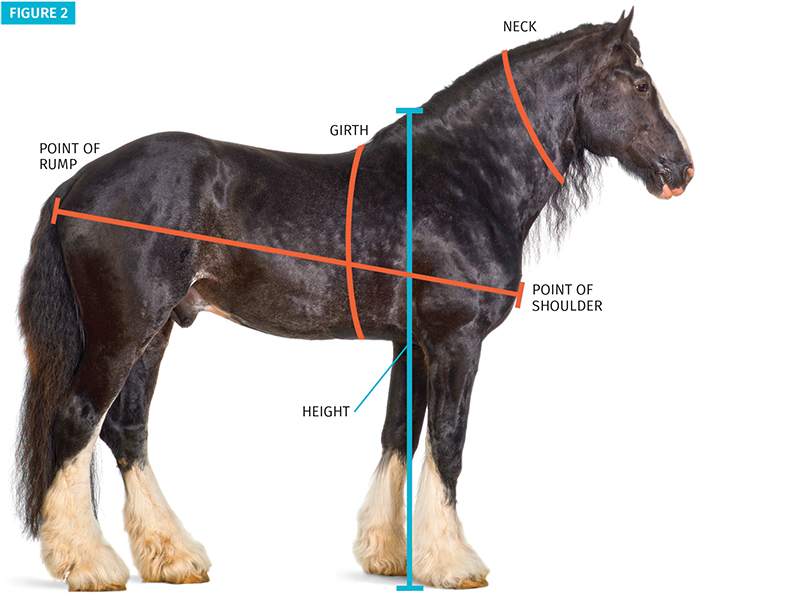
Photo: iStock/GlobalP
To use this formula you will need to get out the tape measure again, and in addition to a heart girth and body length measurement straight from point-of-shoulder to point-of-rump (in centimetres), you will need to measure the height and the neck circumference of your horse. The height should be measured just like you would to establish how many hands high your horse is. Remember to allow for shoes. The neck circumference should be measured midway between the poll and the withers (Figure 2).
The formula used is as follows:
Bodyweight (kg) =
[heart girth 1.528 (cm)
X Body length straight 0.574 (cm)
X height at withers 0.246 (cm)
X neck circumference 0.261 (cm)]
÷ 1181 (DRAFT) or 1209 (WARMBLOOD)
Our draft horse’s measurements (imperial measurements must be converted to metric for this formula):
Heart girth: 87 inches or 221 cm
Body length (straight): 67.61 inches or 172 cm
Height 17 hands: 68 inches or 173 cm
Neck circumference: 46 inches or 117 cm
Calculate the weight using an exponent calculator
Bodyweight (kg) = [heart girth (221)1.528 x body length straight (172)0.574 x height at withers (173)0.246 x neck circumference (117)0.261] / 1181 (draft)
Our draft horse weighs:
3821.5 x 19.2 x 3.5 x 3.5 = 898,816.8 / 1181 = 761 kg
The calculation is 96 percent accurate and has a variance of 28 kg up or down.
This formula for the very large breed horse, while accurate, can be daunting because of all the math involved. But again, get out your scientific calculator or use an online exponent calculator. Once you are comfortable with the math, it is a very good way to monitor the weight of the large bodied performance horse.
Conclusion
Establishing your horse’s body weight is an important part of any management plan. While a scale is the most accurate way to weigh a horse, it isn’t practical for many horse owners. Using weight tapes is an easy accurate way for most light breed horses. Horses who cannot be accurately assessed for body weight using a weight tape can still be assessed using them to establish weight gain and loss trends. This can be very helpful in the management of performance horses and growing horses. For the most accurate weight assessments though, it is best to get a soft cloth or plastic tape measure and start establishing a record of body measurements for your horse. These can be used to calculate his weight using any of a number of good formulas developed for this purpose.
Photos are an excellent way to augment your records of regular body condition scoring of your horse. You will find that calculating the weight of your horse is an easy exercise, and it may potentially become an important part of your management plan.
Related: The Dangers of Equine Obesity
Related: Horse Feeding Myths and Misconceptions
Main photo: Shutterstock/Vera Zinkova







